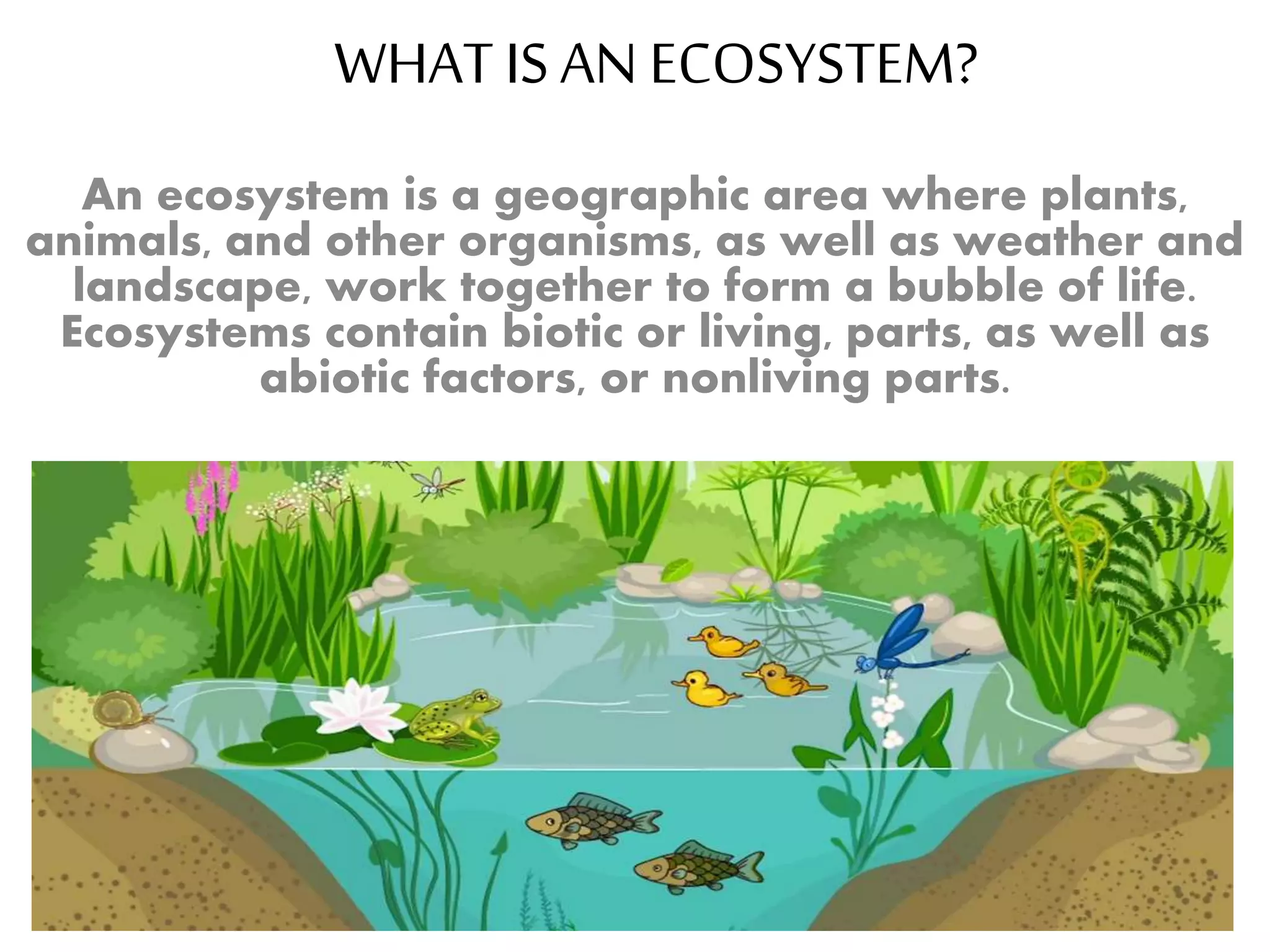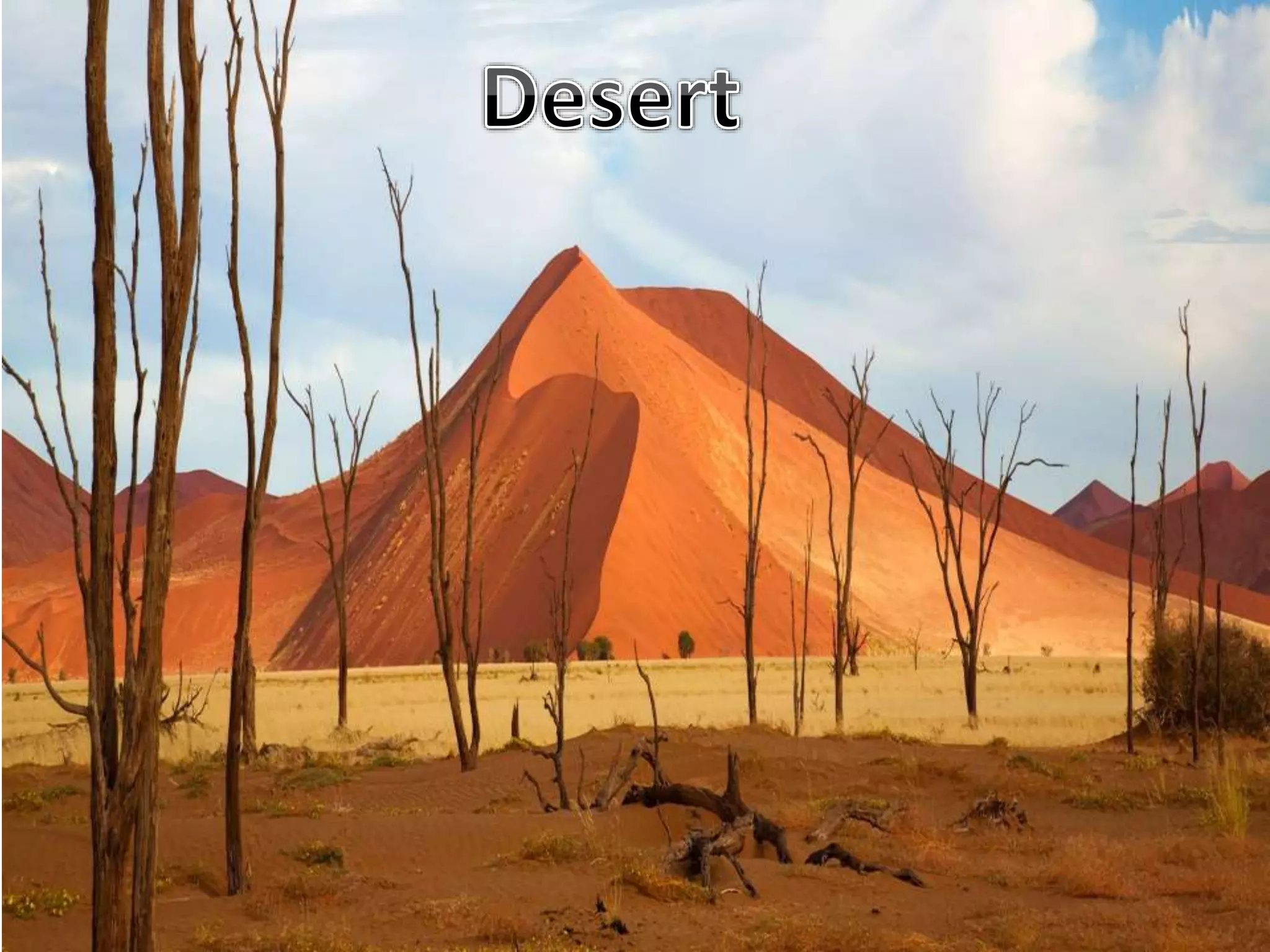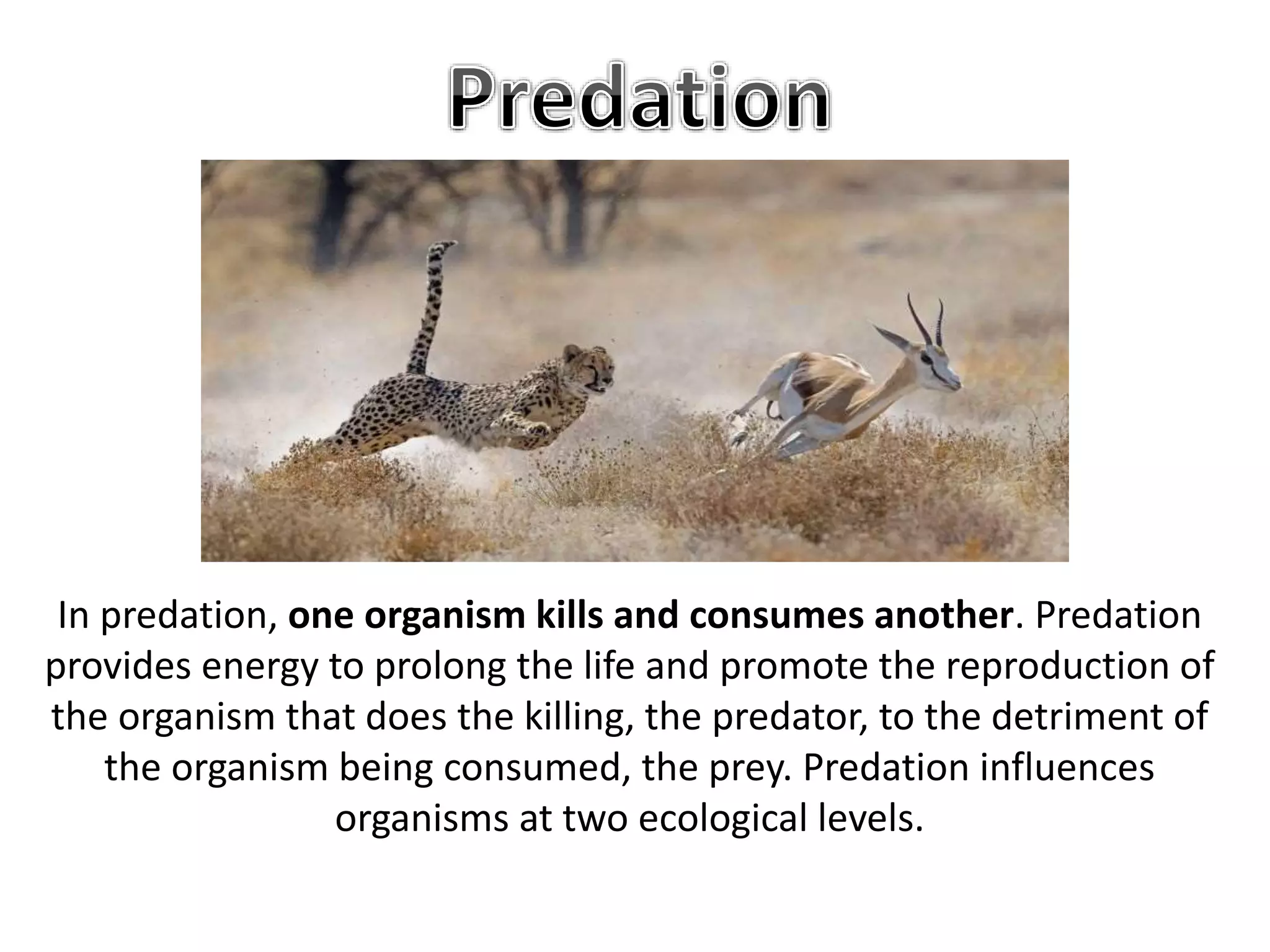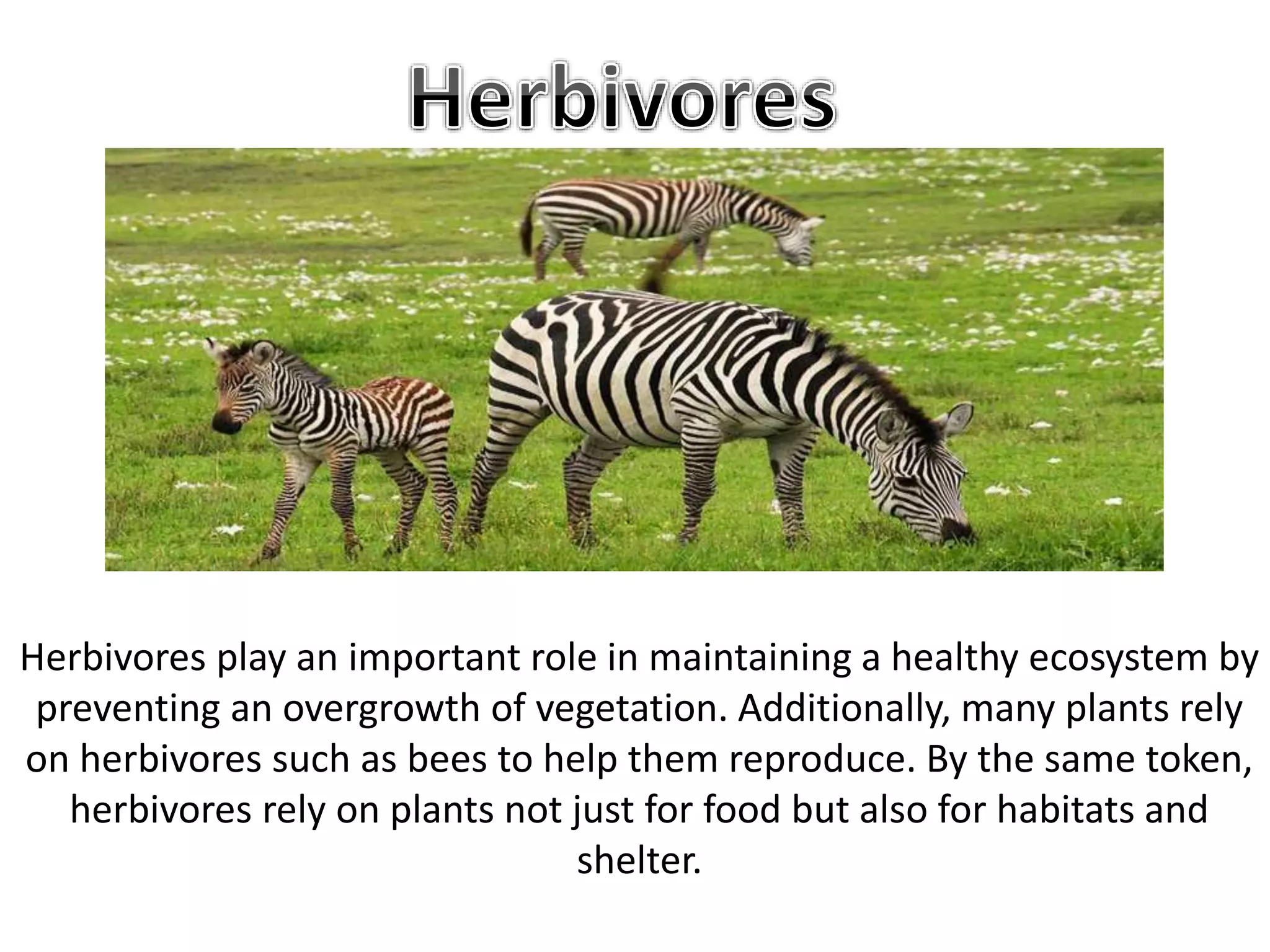An ecosystem is a geographic area where living organisms, weather, and landscape interact, including biotic and abiotic components. It encompasses food chains involving producers, consumers (herbivores, carnivores, omnivores), scavengers, and decomposers, each playing essential roles in energy flow and recycling nutrients. Additionally, relationships such as symbiosis and predation influence the dynamics and health of the ecosystem.




















